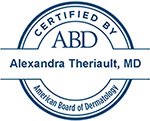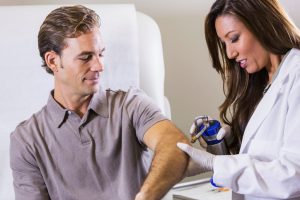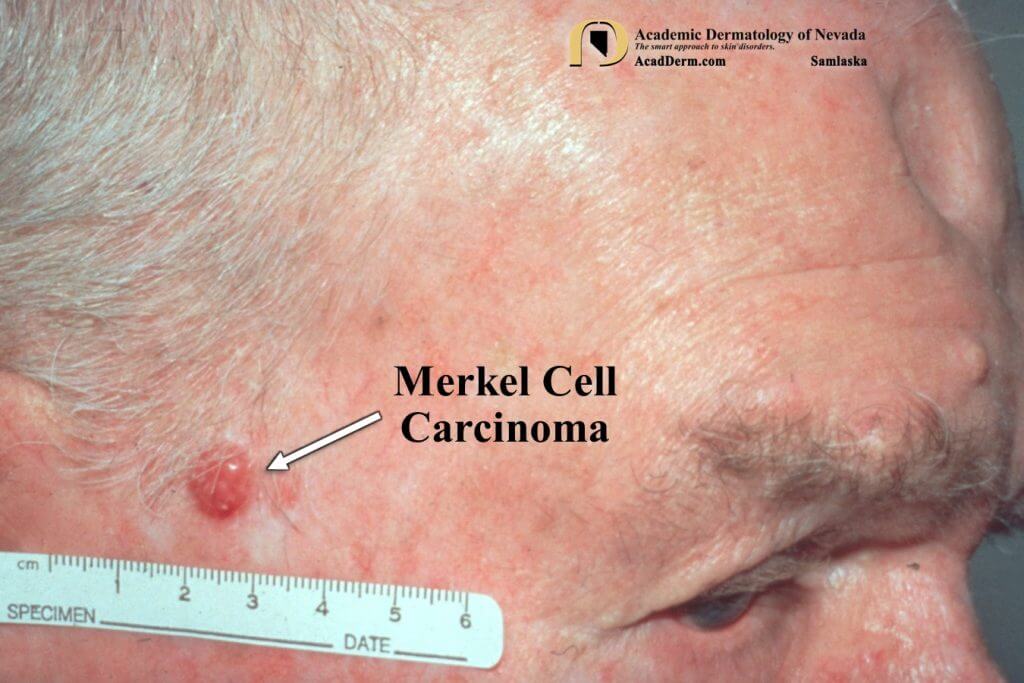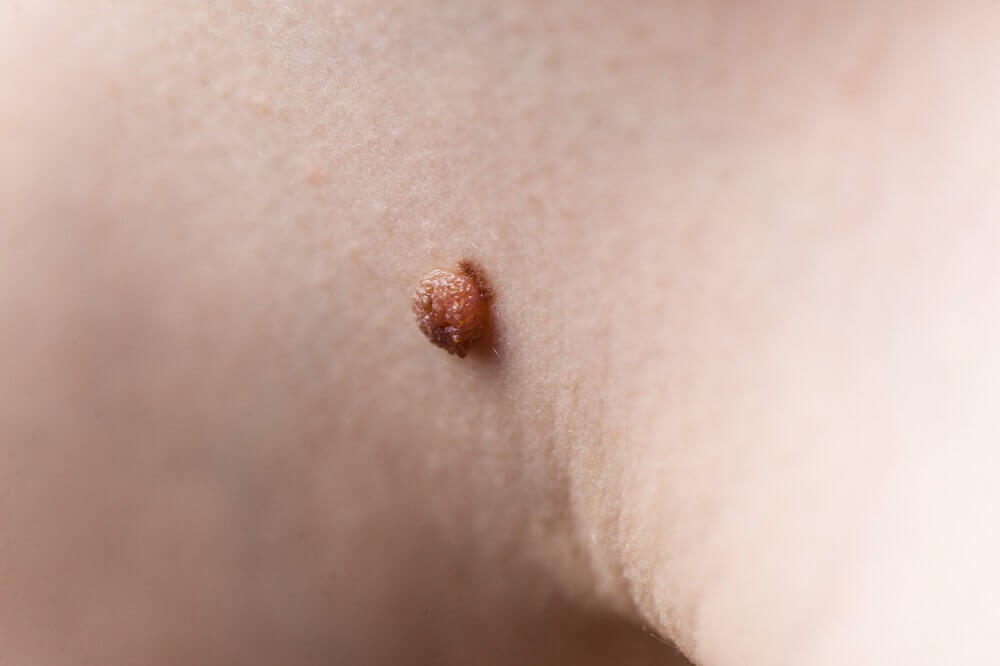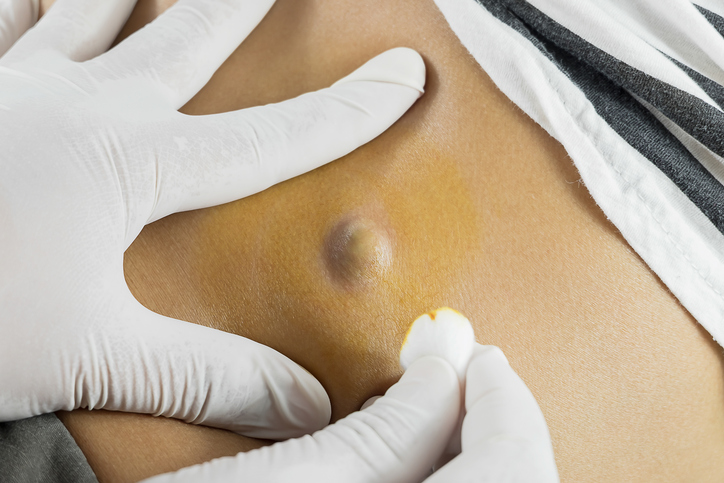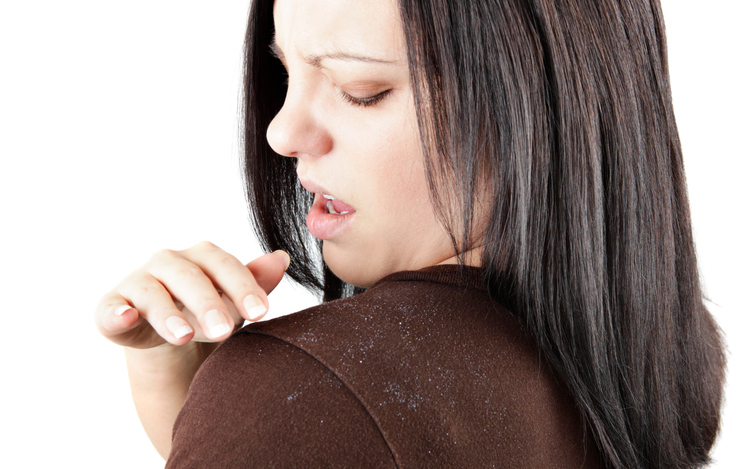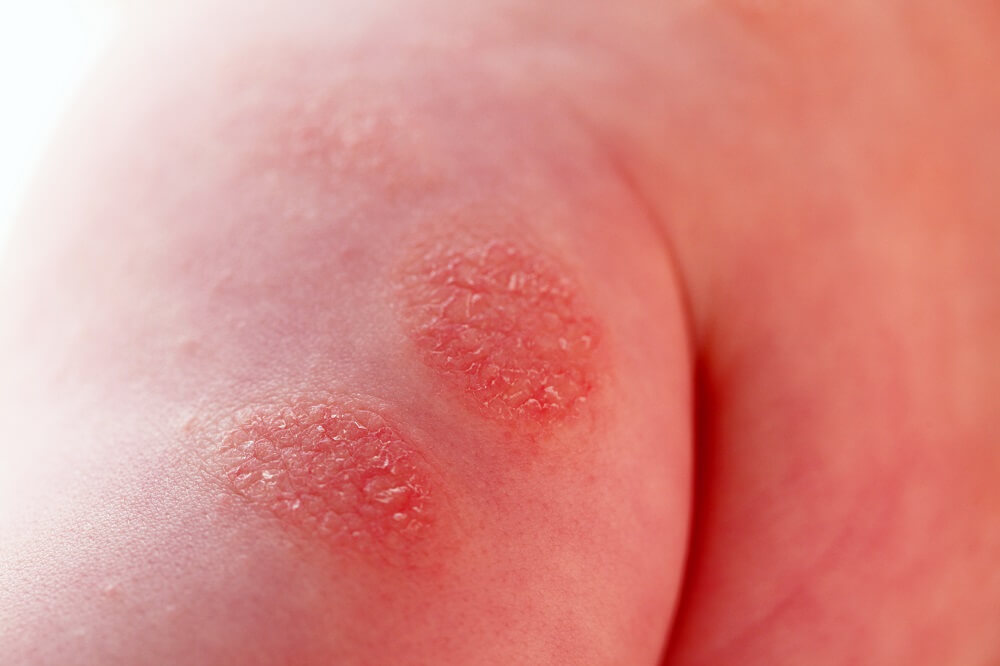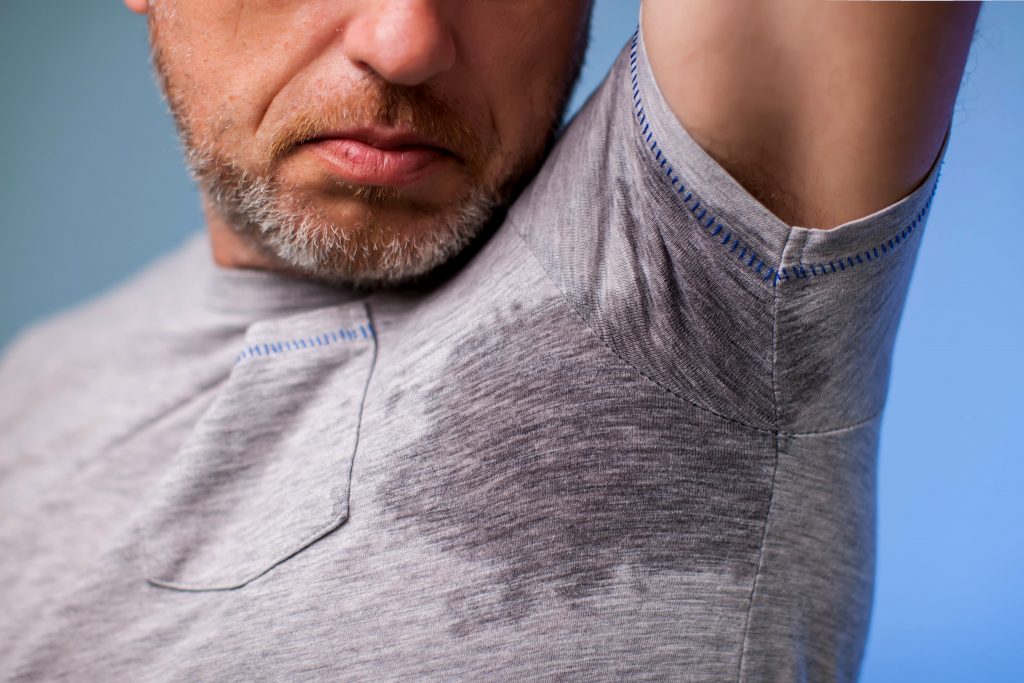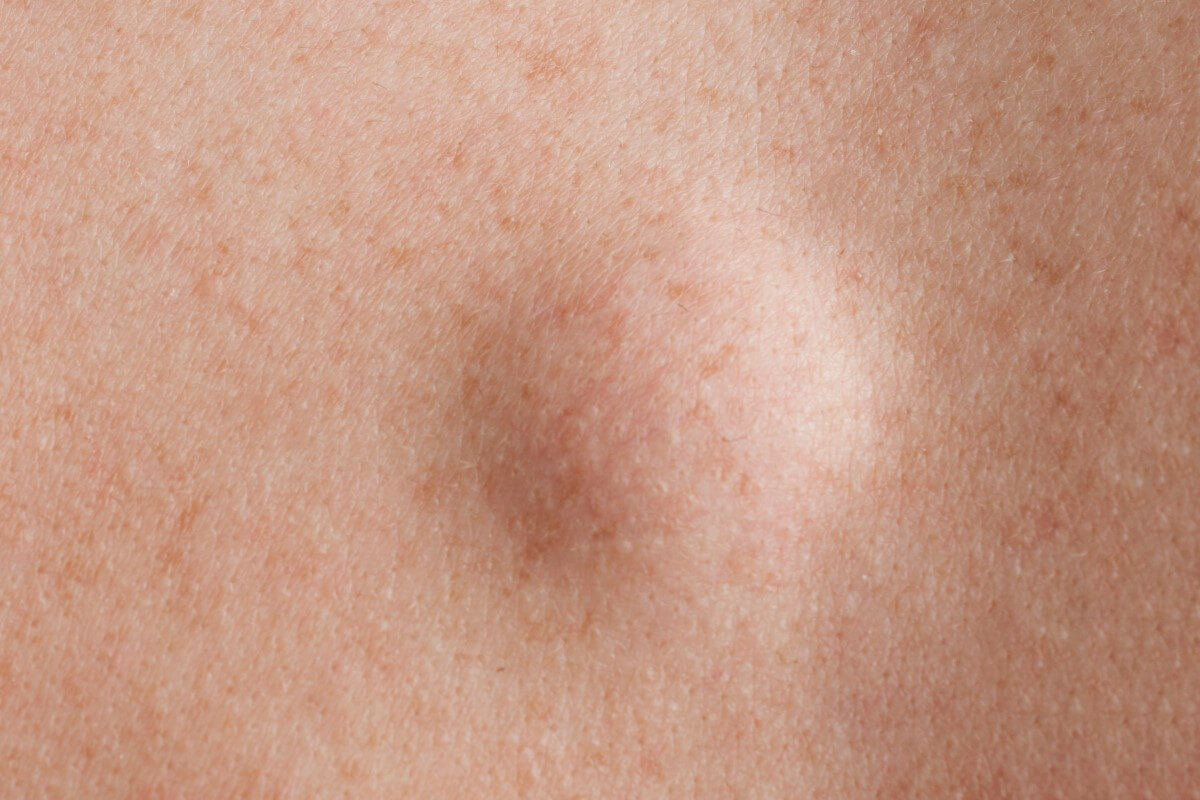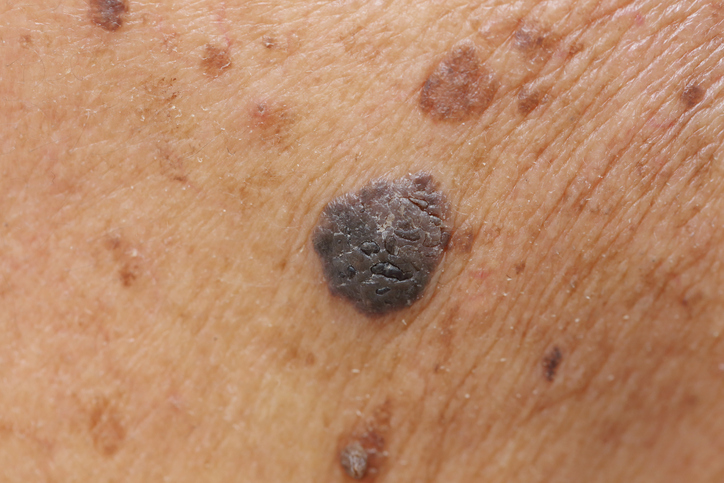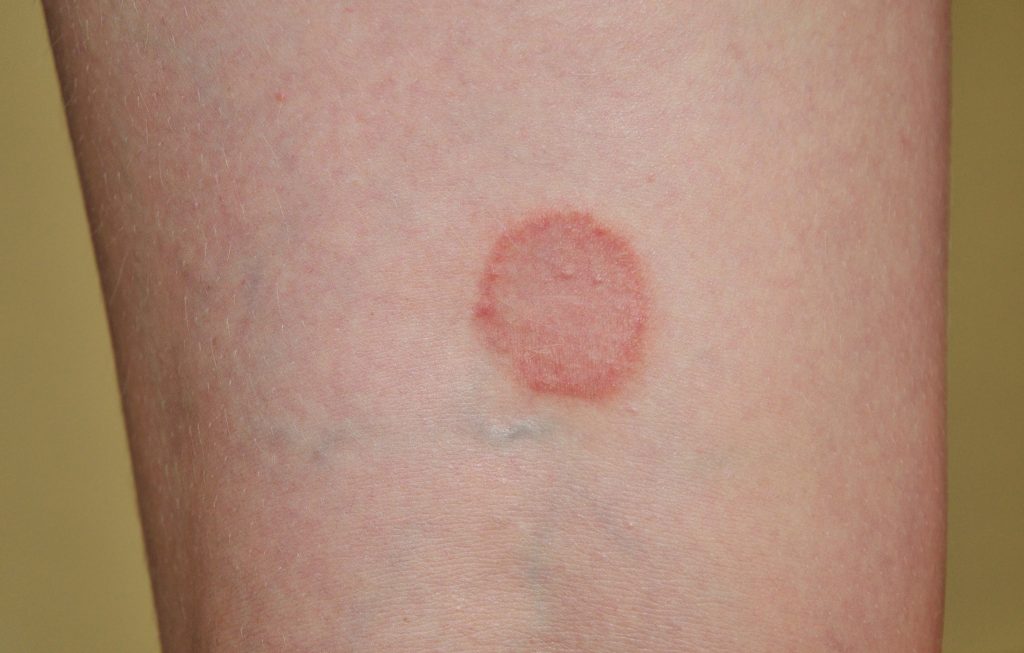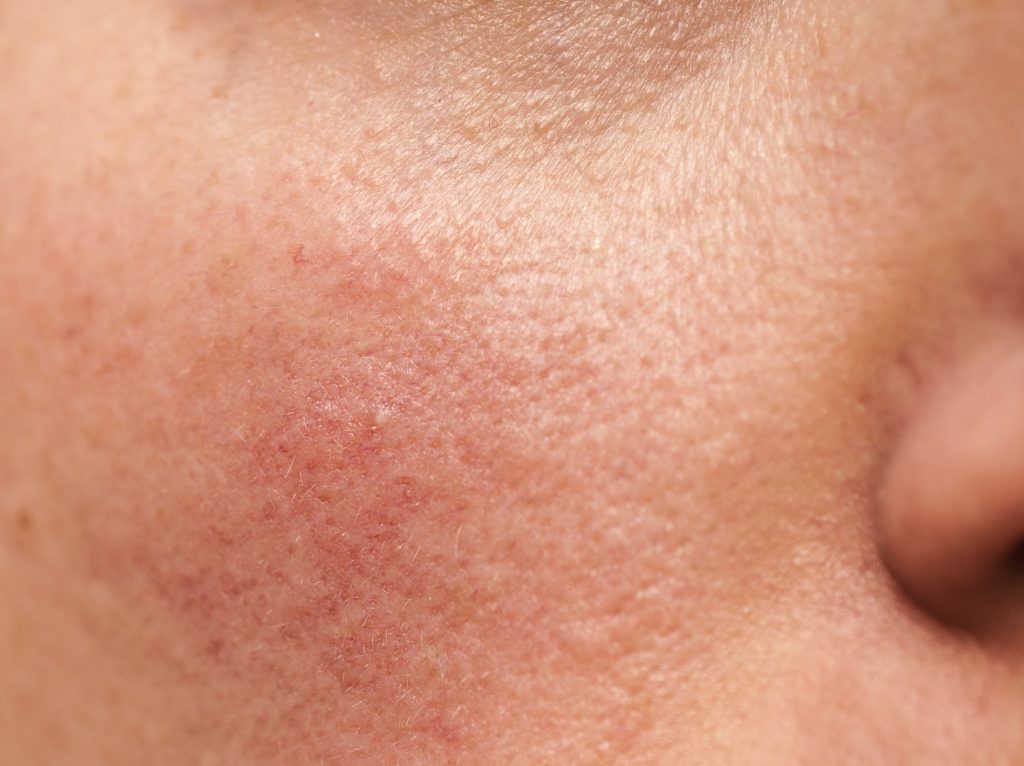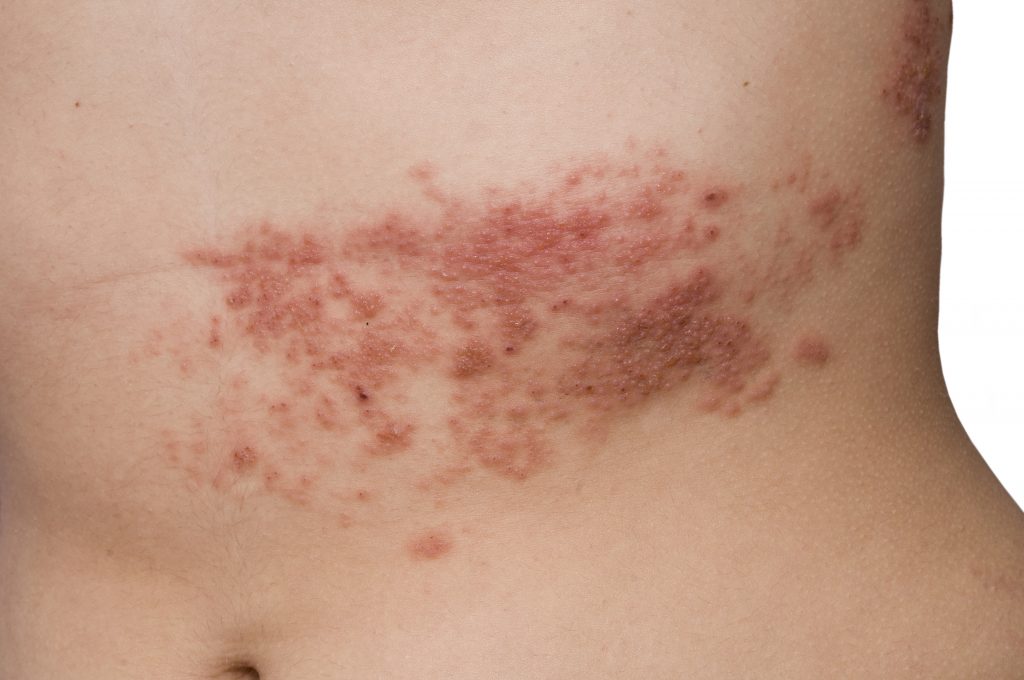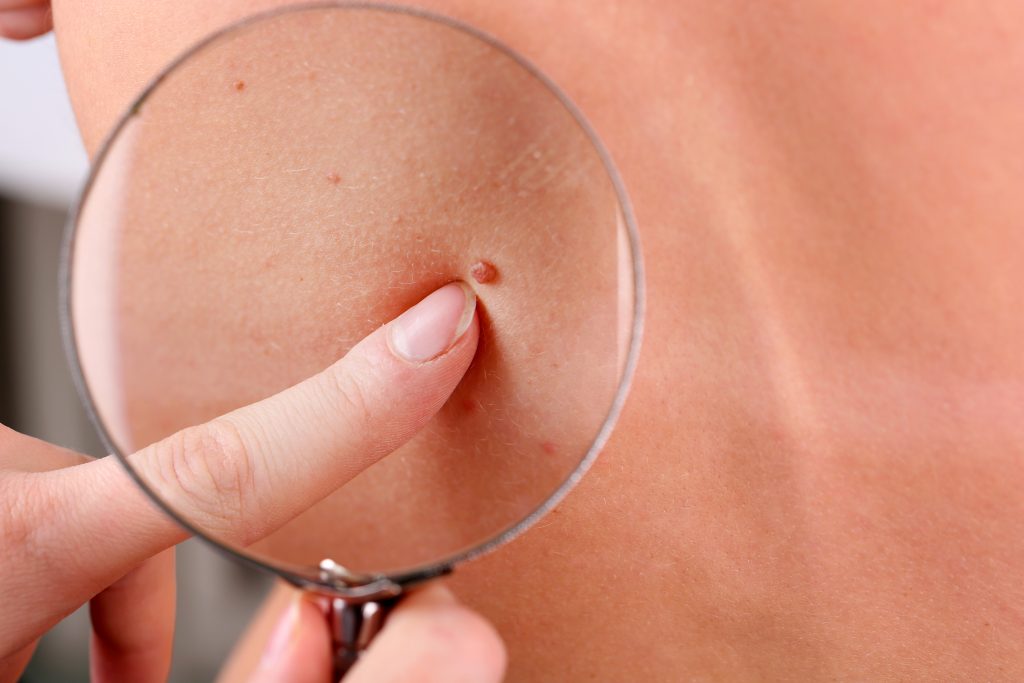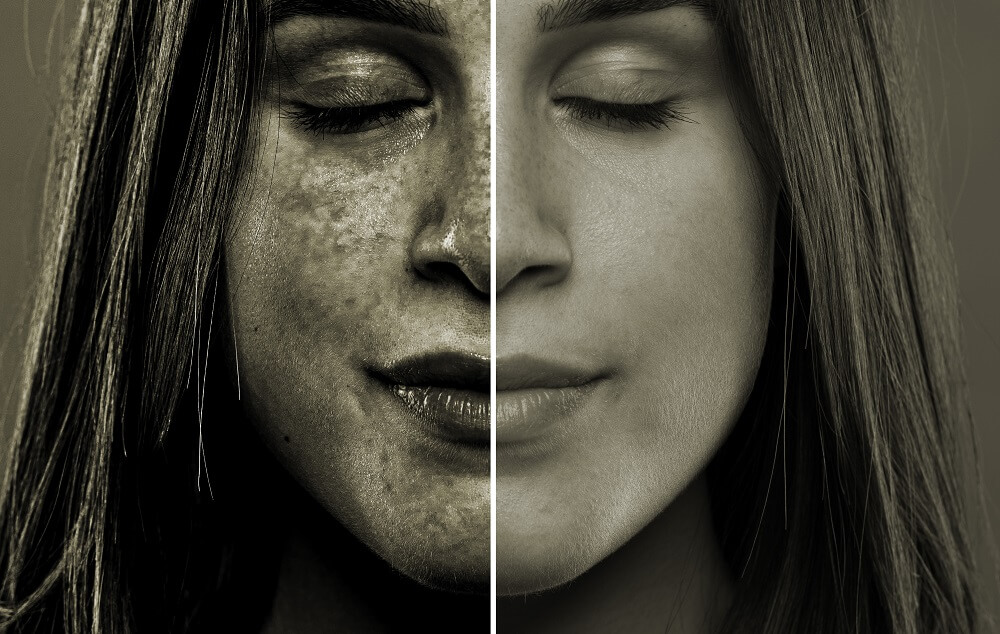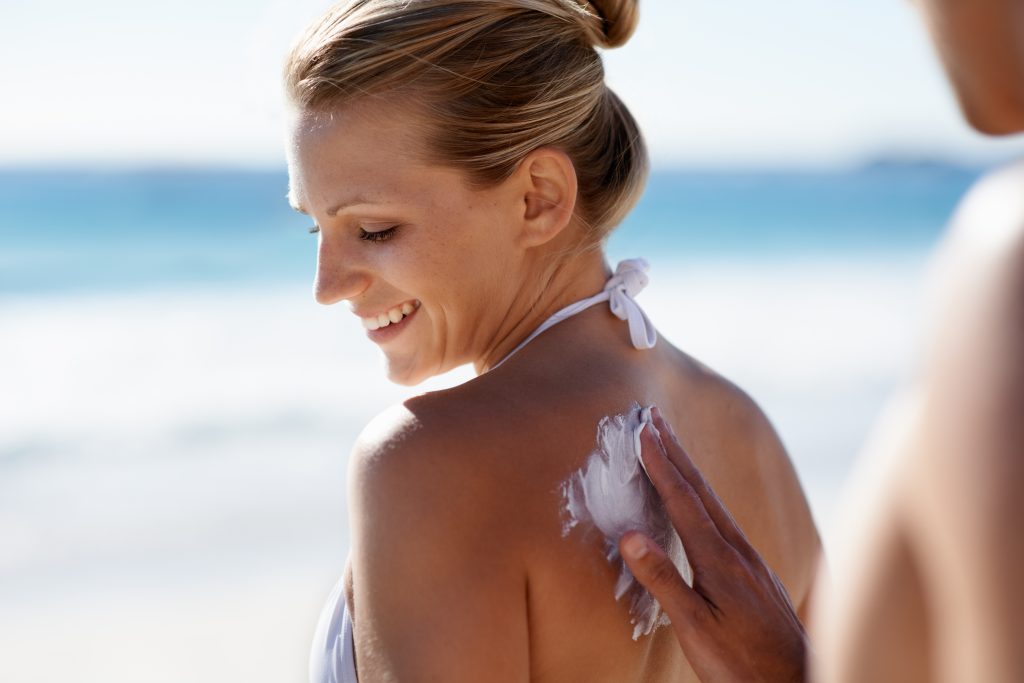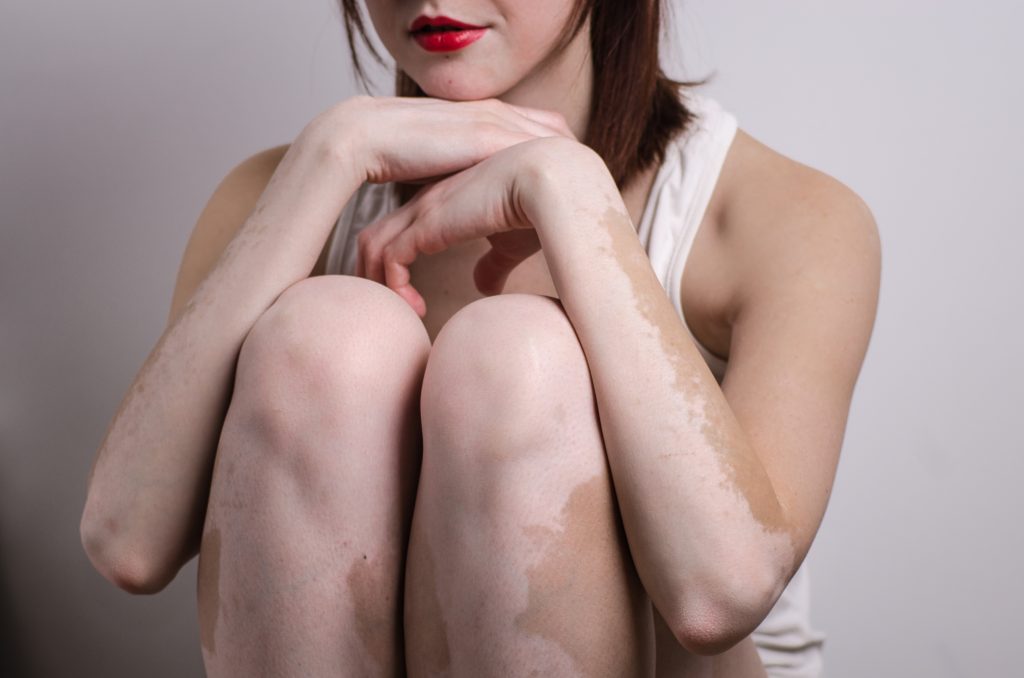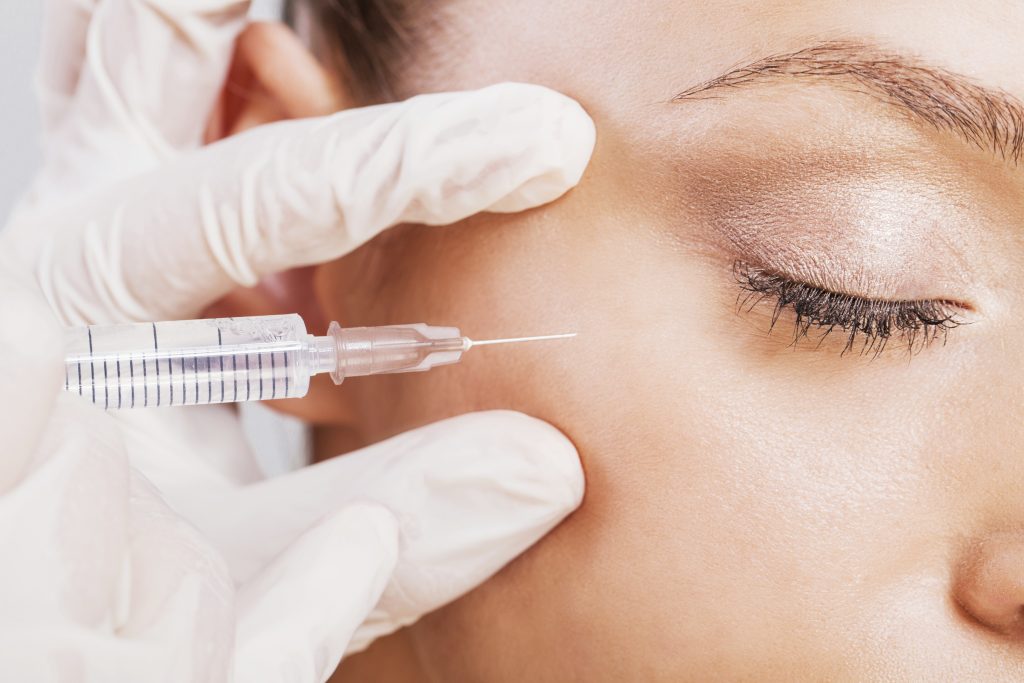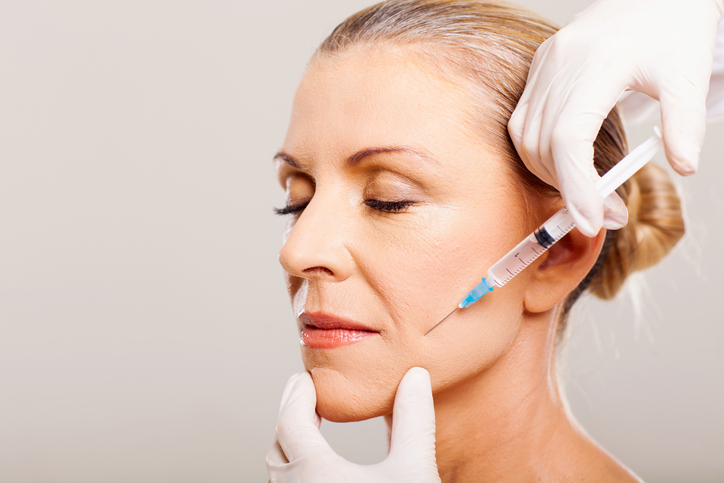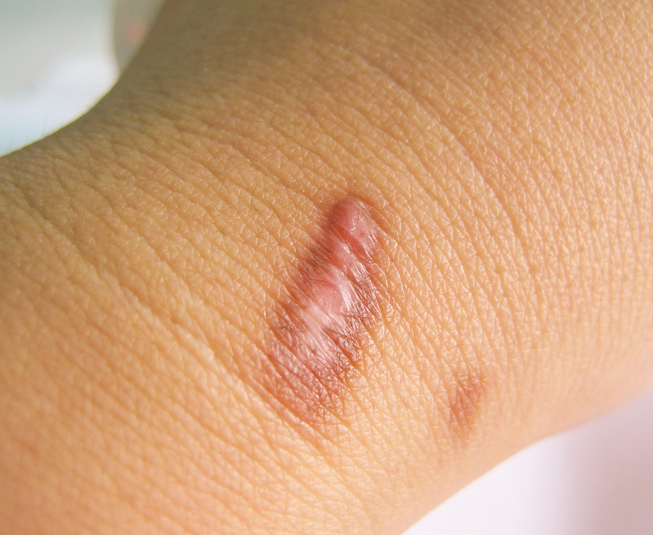Dr. Alexandra Theriault graduated manga cum laude from The University of Texas at Austin. She attended medical school at The University of Texas at Houston and was selected as a member of Alpha Omega Alpha Medical Honor Society. She completed her Dermatology residency at the University of Colorado. Dr. Alexandra Theriault became board certified in Dermatology in 2000. She serves as an Assistant Clinical Professor at The University of Colorado and is currently on the teaching facility of Medical Education Resources. She also mentors medical students at the CU Health Science Center as a preceptor, and as a volunteer faculty teaching University of Colorado dermatology residents on Cosmetic Injection Techniques.
Drawn to Dermatology because it is a mentally challenging field, Dr. Alexandra Theriault finds it very rewarding to diagnose a tough case and implement promising treatment options. She especially enjoys treating autoimmune skin diseases, such as psoriasis cutaneous lupus and pemphigus. Apex Dermatology, now a part of U.S. Dermatology Partners, is involved in clinical research, enabling our patients to receive the most cutting edge treatments available.
Dr. Alexandra Theriault enjoys the personal relationships that have developed from treating families that she has been lucky enough to care for over her 16-year career. Her philosophy is to treat her patients with compassion and respect, explain the disease process, and involve her patients in the healing process.
Dr. Alexandra Theriault also finds reward in the cosmetic side of dermatology. “I believe that my background in art serves as a good foundation for performing cosmetic procedures as many of them are sculptural. We do not aim to change the patient’s appearance; rather, we are looking to enhance it.”
During her free time, Dr. Alexandra Theriault enjoys skiing, running, hiking, playing the guitar, and enjoying time with her husband and two children. In the community, she participates in free skin cancer screenings and is involved in philanthropy for children’s programs for those at risk, programs that support the Arts in Colorado, and programs that aid the homeless population in Denver.
Dr. Alexandra Theriault treats patients at U.S. Dermatology Partners Littleton and U.S. Dermatology Partners Denver, formerly Apex Dermatology Group, in Littleton and Denver, Colorado.
Featured Articles
- The best retinol products for your 50s, according to dermatologists
- Out-of-control tanning tips are trendy on social media
- We Looked at 155 Dermatologists serving Denver and Picked the Top 17
Featured Blogs
- Can You Get a Chemical Peel in the Summer? What You Need to Know
- Pre-Wedding Skincare Routine: How to Get Perfect Skin for Your Big Day
- Skincare Solutions for Menopause: How to Address Common Skin Changes
- Microneedling – Benefits for Acne Scars, Stretch Marks, Dark Spots, and Melasma
- Best Sunscreen Tips for Kids & Teens
- U.S. Dermatology Partners is Recognized in 5280 Magazine's Top Doctor
- Understanding How Your Skin Changes During Menopause
- Skincare Tips for Busy Moms to Help Keep Their Skin Looking Its Best
- How Diet Impacts Skin Health
- 10 Reasons Why You Should Wear Sunscreen in the Winter


